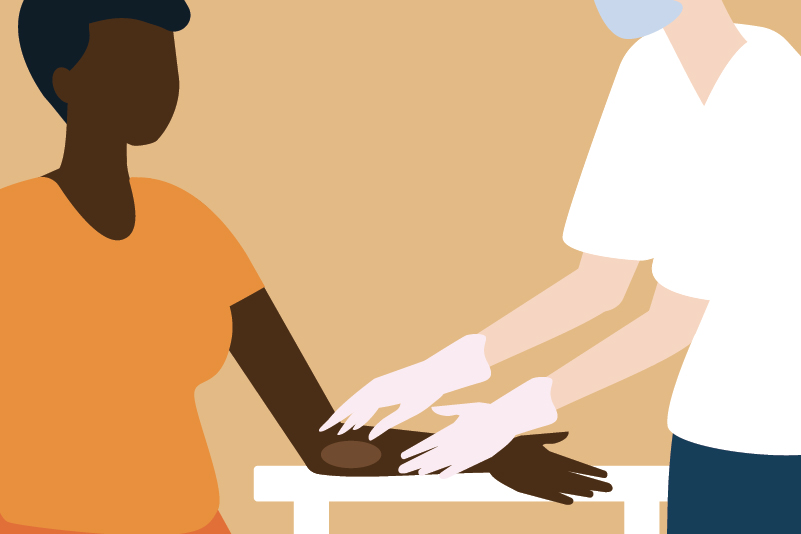#204 Actinic Keratosis: Out Damned Spot!

Reading Tools for Practice Article can earn you MainPro+ Credits
Join NowAlready a CFPCLearn Member? Log in
- Versus placebo (complete clearance):
- 0.5% 5-FU (three RCTs, 522 patients):
- 30% versus 1.5% after 1-4 weeks of treatment with four weeks follow-up. Number Needed to Treat (NNT)=4.
- 5% imiquimod (11 RCTs, 2,880 patients): 42% versus 5%, NNT=3.
- Decreased roughness, scaliness/dryness: 55% versus 18%, NNT~3.
- Ingenol mebutate (two RCTs, 456 patients): 38% versus 7%, NNT=4.
- Pigmentation changes: No difference.
- 0.5% 5-FU (three RCTs, 522 patients):
- Versus cryotherapy (complete clearance; one RCT, 51 patients):
- 5% 5-FU: 96% versus 68%, NNT=4.
- “Excellent” cosmetic outcomes: No difference.
- 5% imiquimod: 84% versus 68%, no statistical difference.
- “Excellent” cosmetic outcomes 81% versus 4%, NNT=2.
- 5% 5-FU: 96% versus 68%, NNT=4.
- Versus 5% 5-FU (complete clearance):
- 5% imiquimod (two RCTs, 89 patients): Larger study, 85% versus 88%, no statistical difference.
- “Excellent” cosmetic outcome (one RCT, 50 patients): 81% versus 4%, NNT=2. Results unreliable.
- 5% imiquimod (two RCTs, 89 patients): Larger study, 85% versus 88%, no statistical difference.
- Large, extensive, or atypical lesions often excluded from RCTs.
- No RCTs have investigated effects of treatments on cancer incidence.
- Rate of progression to squamous cell carcinoma (individual lesions) varies: 0-0.53%/year depending on sun exposure, age, and number/size of lesions.6
- Hypertrophic, painful, atypically broad lesions may progress faster.5
- Guidelines suggest cryotherapy for smaller, isolated lesions, and topical creams (field-directed treatment) for ≥4 clustered lesions.7
- Whether creams after cryotherapy improve effectiveness over creams alone is unclear.7
- Adverse effects include (all): Localized pain, erythema, swelling, vesicles/bullae, pigmentation changes.
- Cryotherapy: Rarely scars/hair loss.
- Creams: Burning/itching, erosions.
- 5-FU: Ulcers, toxic agranulocytosis (very rare).
- Imiquimod: Photosensitivity, systemic effects if applied on larger areas (joint/muscle pain, fever, headache).
- Ingenol: Hypersensitivity.







 Complete Activity
Complete Activity